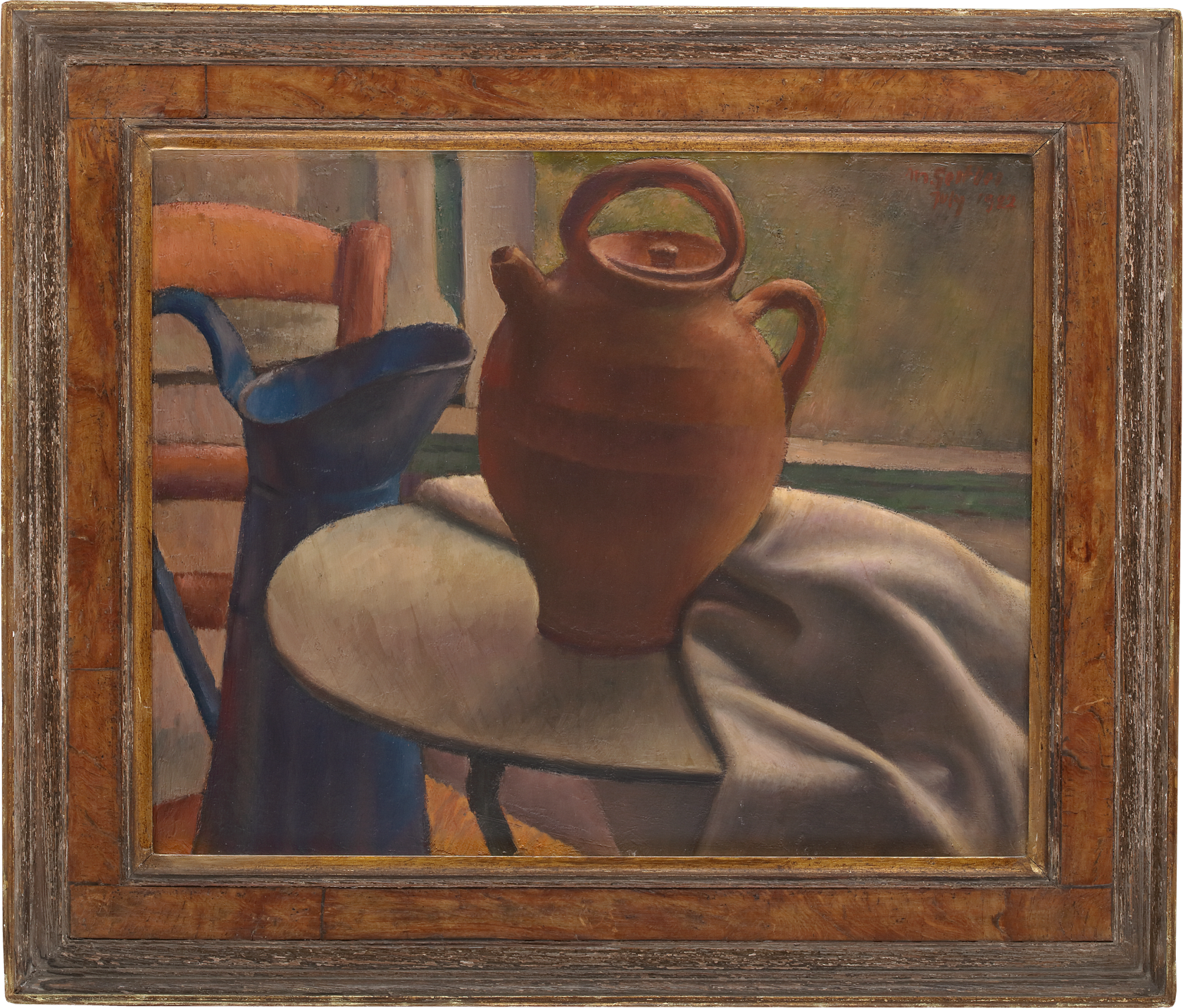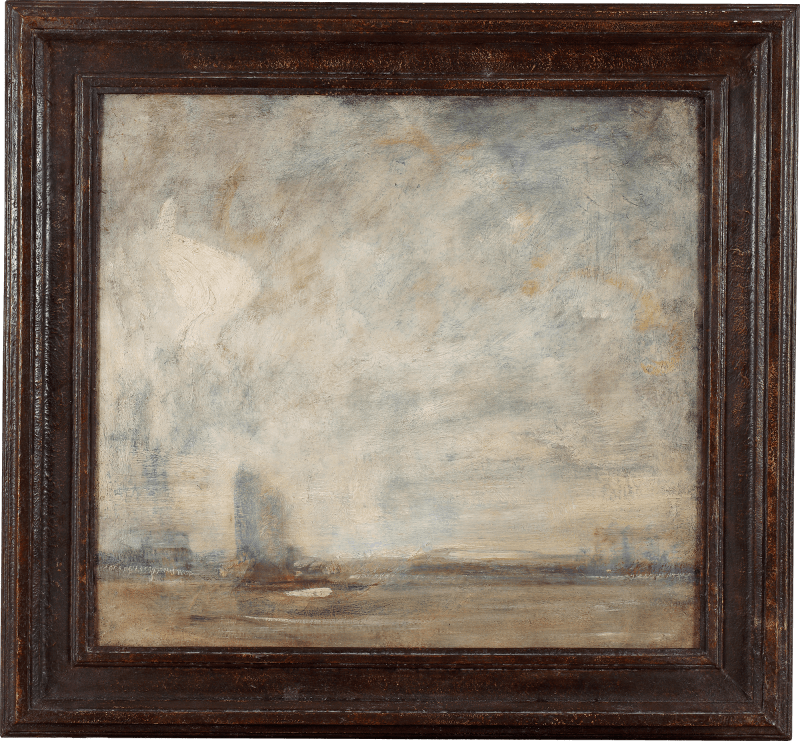This sensitive still-life was painted by Mark Gertler, one of the most prominent British artists of the early twentieth century, and was undertaken whilst he was staying with the novelist and poet Valentine Dobrée at Larrau in the Pyrenees in the summer of 1922.
Gertler suffered from tuberculosis and after the First World War spent long periods of time in France where the climate was more forgiving. By the time this work was painted, Gertler had familiarised himself with contemporary French art and was continuing to experiment with post-Impressionist concepts of colour in relation to form and space. Although avoiding highly pitched tones in this work, the artist nevertheless demonstrates his assimilation of knowledge as to how certain objects of a similar tonal value can exist beside and complement each other in a composition. This effect is heightened by the artist’s smooth style of painting which softens the surface texture of each object – whether it be a piece of...
This sensitive still-life was painted by Mark Gertler, one of the most prominent British artists of the early twentieth century, and was undertaken whilst he was staying with the novelist and poet Valentine Dobrée at Larrau in the Pyrenees in the summer of 1922.
Gertler suffered from tuberculosis and after the First World War spent long periods of time in France where the climate was more forgiving. By the time this work was painted, Gertler had familiarised himself with contemporary French art and was continuing to experiment with post-Impressionist concepts of colour in relation to form and space. Although avoiding highly pitched tones in this work, the artist nevertheless demonstrates his assimilation of knowledge as to how certain objects of a similar tonal value can exist beside and complement each other in a composition. This effect is heightened by the artist’s smooth style of painting which softens the surface texture of each object – whether it be a piece of fabric or a clay pot – and creates a more visually harmonious work.
Earlier in 1922, Gertler held his second solo exhibition, which met with enthusiastic reviews; The Burlington praised him as ‘a consummate artist’ and ‘one of the best three or four young painters in England’,[1] whilst art critic Roger Fry was relieved that ‘in a country where art is generally taken so lightly … intense gratitude, that there is at least one artist who refuses ever to trifle with his talent.’ [2] During 1922, Gertler’s work was exhibited with the London Group, the Friday Club, at Whitechapel Art Gallery and he represented Britain at the Venice Biennale.[3] He also painted one of his most celebrated works, Queen of Sheba, now in the collection of Tate, which combines Gertler’s two favourite subjects – the human figure and still life. Reflecting on the year in a letter to arts patron Ottoline Morrell, he wrote ‘I certainly seem popular all of a sudden’.[4]
[1] The Burlington Magazine, vol. 38, no. 216 (March 1921), p. 150.
[2] Roger Fry, (1922) ‘ART: The Goupil Gallery’, New Statesman. 18 Feb 1922, p.561.
[3] Sarah MacDougall, (2002) Mark Gertler. London: John Murray, p. 209.
[4] Mark Gertler, Letter to Ottoline Morrell. December 1922. Quoted in ibid, p. 213.











